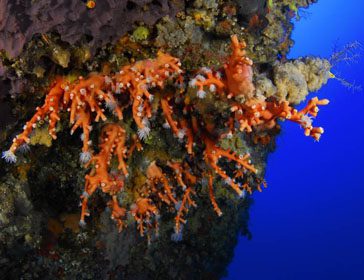Overview
Corals are animals or colonies of them that form complex seafloor structures -- the foundation for some of the richest ecosystems in the world.
Corals are slow-growing (only a few millimetres per year) and constitute a habitat of high ecological value for a wide variety of species. They create three-dimensional calcareous structures that offer protection, food and spawning areas for many animals, although these structures are very fragile.
The distribution of many coral species remains unknown today. The well known species are the ones that are commercially exploited, but there are many little known or completely unknown species with unlikely geographical distributions.
Apart from direct harvesting of some species, other factors also negatively affect coral populations, including bottom trawling and the climate change, both due to increased water temperature and increased marine acidification .
The Oceana Approach is straightforward and uses all available information to protect and preserve living seafloor habitat.
Oceana develops research campaigns in the Atlantic and Mediterranean where, with an underwater robot (Remote Operated Vehicle ROV), professional divers and scientists study and document the sea beds:
- Locate, identify and describe corals and other species that live on the sea beds at hundreds of meters depth.
- Study the health of coralline and calcareous ecosystems determining the main threats.
- Promote the designation of marine protected areas in areas where habitats and species of high ecological value exist and prevent destructive activities in the protected areas.
- Collaborate with scientific publications to increase knowledge about new species and undocumented locations.
- Report destructive or illegal fishing activities that destroy many species of corals, gorgonians and sessile organisms.



